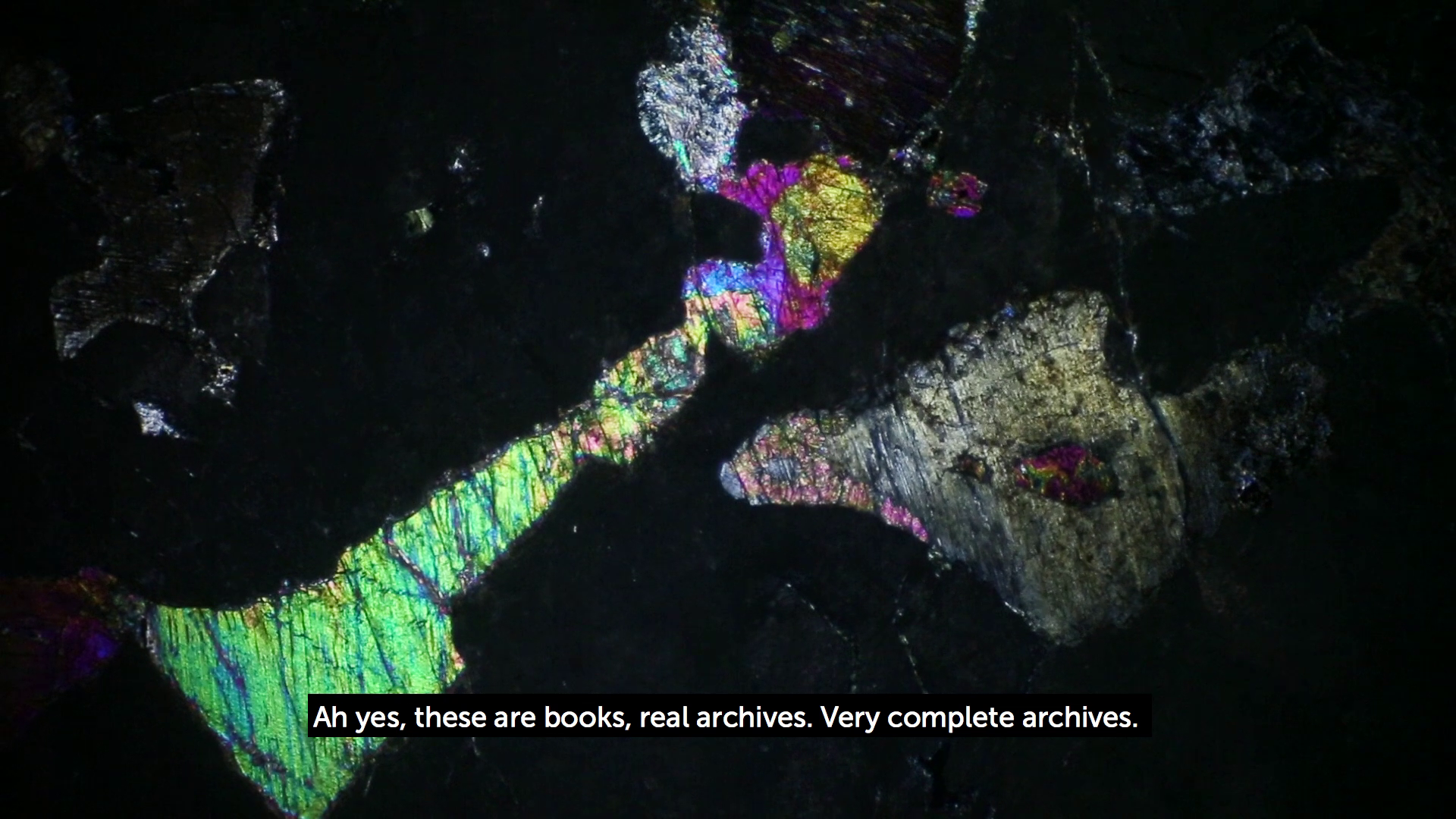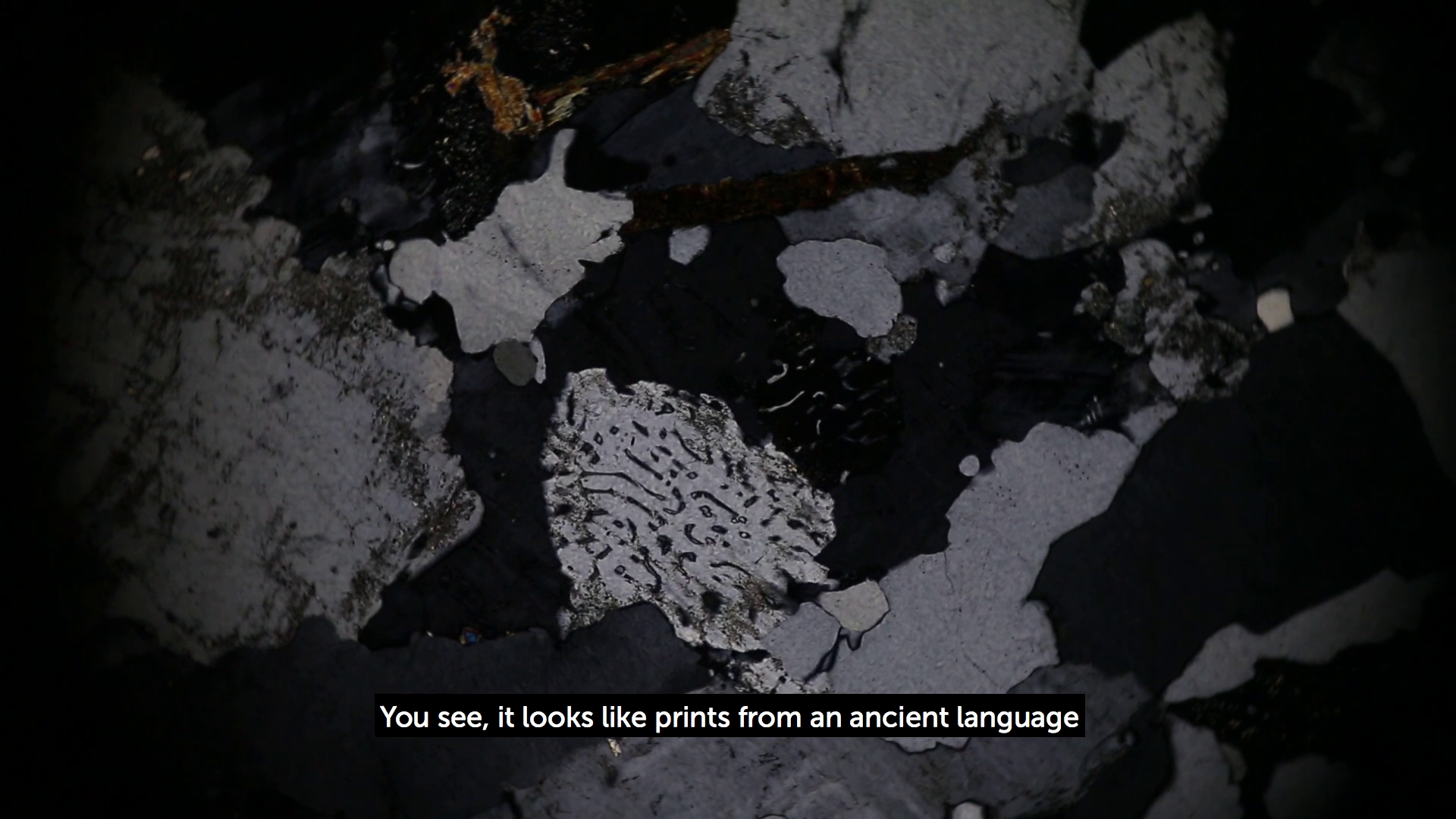MINÉRAL
The music video Mineral explores the optical phenomena occurring within crystals studied in laboratories. I grafted my camera onto a petrographic microscope and filmed a series of thin sections of rocks, taken from the wide collection of the SAGA, a geologists social club hosted in the National Museum of Natural History in Paris (NMNH). Exploring the functionalities of the petrographic microscope beyond its common use led me to film variations of hue and saturation rarely observed by petrographers.
Optical mineralogy is the study of minerals and rocks by measuring their optical properties. In laboratories, petrographical microscopes are the essential tools for petrographers, the scientists studying the composition of rocks on thin sections of 0,03mm. The cross polarized light of this specific microscope changes hues and intensity depending on the nature and direction of the crystals it passes through. The study of these chromatic phenomena allows geologists to read the rocks, their composition, origins, metamorphosis, story… Rocks and minerals are the archives of the Earth and of the Cosmos.
The main actors of this film are the quartz, the feldspath, the biotite, the muscovite, the olivine, the staurolite, the garnet, the plagioclase, the pyroxene… They are about 40 to 500 millions years old.
The main actors of this film are the quartz, the feldspath, the biotite, the muscovite, the olivine, the staurolite, the garnet, the plagioclase, the pyroxene… They are about 40 to 500 millions years old.
Talking about the structure of stones
This interview, collected in the heart of the laboratory of geologist Dominique Rossier, allows us to learn more about stones. From the propagation of light through them to the colors that are created by penetrating them. From their graphic structures to their physical complexities.
The stones light up and go out.
Crossed growths, colored figures. The stones are ‘singing’.
Sea water and weight crushing. The marks of time can be read on the stones: crystallographic structure, anisotropic material, chromatic polarization, myrmekite, microcline, ...
So many terms defined in this exchange. These "effects" allow us to read the metamorphosis of these stones.
"It's a very comprehensive archive." Rossier tells us.






This video is made in collaboration with the Société Amicale de Géologistes Amateurs hosted by the National Museum of Natural History in Paris (MNHN).
The thin sections filmed in the video are of various rocks : Gneiss Oeillé, Granites, Leptynite, Peridotite, Phonolite, Rhyolite, Schiste tacheté, Dolérite, Gabbro.
The thin sections filmed in the video are of various rocks : Gneiss Oeillé, Granites, Leptynite, Peridotite, Phonolite, Rhyolite, Schiste tacheté, Dolérite, Gabbro.
Many thanks to Dominique Rossier from the SAGA, for welcoming the project in the lab, for sharing his collection of thin sections, for his generous time and precious explanations.